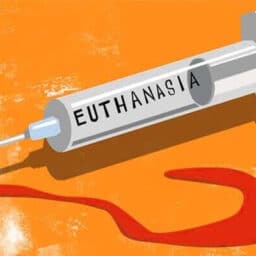INTRODUCTION
The federal structure of the Republic of India gives rise to division of power in making laws separately by the union as well as the states. It is clearly defined in the constitution[1] as the separation of legislative and executive powers between the Federation and the States. To mark the distinction in the subject matter of the laws, according to the Seventh Schedule of the Constitution it is divided into Union list, State list, and Concurrent list.
‘Marriage’ being a subject existing under the Concurrent List[2] gives power to both (Union as well as the States) for making laws regarding this. Sometimes or rather say many times we have seen conflict arising on the account of laws made on the same subject separately by the legislative bodies. To support these let us talk about the very recent bill passed by the state of Rajasthan regarding ‘Registration of Child Marriages’. The current bill is to amend the act called the Rajasthan Compulsory Registration of Marriages Act, 2009. The focus of this bill is to make registration compulsory for all marriages, including Child Marriages. In the words of the bill, it says “if the bride is under 18 years of age and the groom is under 21 years of age”, it makes it necessary for their parents/guardian to submit a memorandum for registration of marriage.
The flames brought about by this Rajasthan Bill took no time but to bring the long-lost serious issue of Child Marriage back into the limelight. No matter how far our country has developed in technology and the current lifestyles of the people, the existence of Child Marriages is still a reality.
HISTORICAL ASPECT
Since the centuries, the issue of Child Marriages has been full of complexities. The very first act that talked about this issue was in the year 1929, called the Child Marriage Restraint Act. According to this act, the minimum age set for females was 14 years and for males, it was 18 to constitute a Child Marriage. As it was the time of British India, the Muslim community opposed the law. They set forth the motion that ‘marriage’ is a subject related to personal laws. Thus the Muslim Personal Law (Shariat) Application Act of 1937 came into being.
However due to subsequent amendments, in the year 1978, the minimum age was increased i.e. 18 for females and 21 for males for non-Muslim Child Marriages. Then came the most recent Act regarding the set issue that is The Prohibition of Child Marriage Act, 2006. According to this act a “Child Marriage” is characterized as a marriage with which both of the contracting parties is a child. A male individual, if he has not finished 21 years old, and a female individual, if she has not finished eighteen years old, is a ‘Child’ with the end goal of this Act. Section 3 of the Act makes Child Marriage voidable at the choice of the contracting party. Nonetheless, this act saw many shortcomings which were dealt with sequential case laws and amendments.
THE LAW
There have been many cases that have dealt with the question of the validity of Child Marriages in India. The most prominent judicial pronouncements were –
- Lajja v. State[3]
The Prohibition of Child Marriage, 2006 Act doesn’t make a Child Marriage void from the very beginning however just proclaims it as avoidable. From one perspective Child Marriage is treated as an offence that is condemned under the law and then again, it regards this marriage as valid, i.e., voidable till it is proclaimed as void.
- Independent Thought v. Union of India[4]
In this case, also the Supreme Court found it bizarre that the 2006 Act while restricting a Child Marriage and criminalizing it, doesn’t pronounce it void. As of late, the Punjab and Haryana High Court saw that even though Muslim Personal law permits Child Marriage, the Prohibition of Child Marriage Act, 2006 is a mainstream law and doesn’t make any such differentiation based on religion. The State of Karnataka, in 2016, passed an amendment to the 2006 Act making each Child Marriage solemnized on or after the date of coming into existence of the amendment as ‘void ab initio.’
ISSUES WITH THE PREVAILING LAW
There revolve some certain issues with making Child Marriages void per se. Some believe that it would leave the young adults in a state of hardships especially the child bride. In such a circumstance, girls in such relationships will not have any of the rights streaming out of the marriage and will be left dispossessed of any legal protection while continuing to remain in the marriage.
Also, it can lead the parents of the girl child to target such marriages that happened without their consent. Such without consent marriages may happen due to several factors such as the dread of retaliation on the discovery of the romantic relationship, the fear of forced marriage, and abuse in their natal homes.
Even when the law is amended to make the Child Marriages ‘void’, it has not deterred such marriages. This argument is supported by the situation that prevailed in Karnataka. It was the first state to declare Child Marriages void but according to the data from the National Crime Reports Bureau (NCRB), Karnataka has the highest number of Child Marriages.
PROBLEMS ASSOCIATED WITH CHILD MARRIAGES
Despite severe prohibiting laws, awareness, education, India still holds 40% of the world’s 60 million Child Marriages taking place[5] (according to the report). The frequencies of Child Marriages are higher among the socially, educationally, and economically backward areas. Chief reasons why the girls are married during her early age are worries for her safety as she accomplishes the age of puberty. Control over her sexuality as the male-centric culture puts an extraordinary accentuation on the virginity of ladies, less awareness regarding the subject are also the force behind it. Sometimes there is a direct relationship between the age of the bride and the dowry demanded i.e. the older the bride the more will be the dowry demand.
Whatever the reason might be, one can’t ignore the devastating impact Child Marriages have on the general development of the youngster, particularly the young girls. There is the dread of pregnancies and STDs. Child Marriages often show the worst consequences in the overall wellbeing of the child, their education, physical and mental health, career prospects, employability and eventually degrading the nation’s economy.
CONCLUSION
Laws are called efficient only when it is implemented and enforced properly. Law is good law when it helps in achieving the purpose it was meant for. According to the legal perspective making Child Marriages ‘void’ or ‘voidable’ will do no good unless the problem is solved from the root cause itself. We know the root cause of these marriages lies in the socio-economic conditions of society. People should be made aware of their rights, educated properly, must be provided with proper health conditions, etc. All these actions have to be accompanied by proper law enforcement agencies and thorough government support. Related laws such as regulating dowry demands and prohibiting trafficking must be tightened.
This issue of Child Marriages must be met with a holistic approach that involves laws, regulating agencies, empowering individuals, women and communities, to create a change we want. It is important for the government, NGOs, international bodies as well as the community level to work together to fight and abolish this evil practice. Even though it is a huge fight to win and will take time to eradicate, it is important to begin now. Every child has a right to a free and dignified life and it is a global responsibility to provide for it.
Author(s) Name: Anushka Singh (HPNLU, Shimla)
References:
[1] The Constitution of India, 1950.
[2] The Constitution of India, 1950, Schedule VII List III (5).
[3] Lajja Devi v. State and Ors., [2013] Cri LJ 3458.
[4] Independent Thought v. Union of India, [2017] 10 SCC 800.
[5] National Family Health Survey, 2021 (NFHS-5)















